Fertilizing Palm Trees
By Phil Bergman
Below are simple guidelines to help you grow your palm trees. A friendly summarization of do’s and don’ts about fertilizing your palm trees.
“How do I fertilize my palm tree?” This is a frequent question asked by palm growers. First below are the quick & simple answers. For more extensive information, read the “To Do” and “Not To Do” comments further below followed by links to more palm articles.
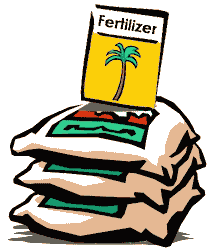
QUICK FERTILIZER ANSWERS for PALM TREES
For those who want a simple quick answer:
- Use an NPK ratio of 3:1:3. N stands for Nitrogen, P for Phosphate and K for potassium. This is the ratio, not the number on the bag. 3:1:2 is also an acceptable ratio.
- So, when you buy, look for a bag that has the numbers “15:5:15”. Or, “12:4:12”. Such numbers are on every bag of fertilizer. The bag will tell you if it is slow release.
- Slow release or delayed release is better and safer than rapid release. Slow formulas cost more but are better. If the bag doesn’t say “slow release” on it, it is the cheaper quick release fertilizer.
- One has to be very careful when using liquid or soluble fertilizers. These are powders that are combined with water and then applied to the plants. They are commonly used on interior plants. Follow the directions and don’t make too strong or give too much. These are all “quick release” fertilizers and can quickly add a salt load to the soil.
- Get a fertilizer that has “microelements”, things such as magnesium, iron, etc.
- Don’t use too much; follow directions
- Never fertilize on dry soil
- Consider organic alternatives such as fish emulsion, blood meal, worm castings, manure (not steer). These don’t kill the worms.
- Be very careful with interior plants as such plants “build up” salts in their soil. Interior plants don’t have the benefit of rainwater leaching the soil (outdoor grown plants). At this website is an article on growing palms inside the home and how to avoid salt burn.
- The most common mistake is fertilizing on dry ground or using too much fertilizer.
Below are photos of the front of bags of fertilizer for palms. Note how there are 3 numbers. These are the N/P/K amounts. The higher these numbers total, the stronger the fertilizer is. Note how they have a 3:1:3 ratio. Microelements are often seen listed below the NPK information.
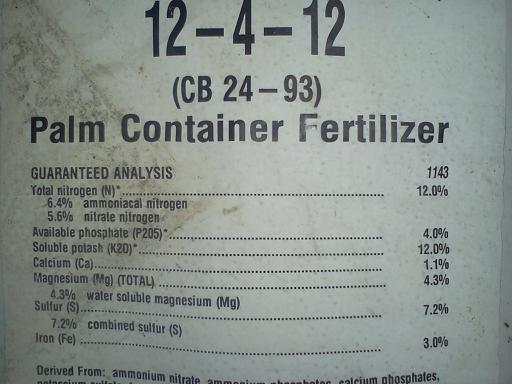
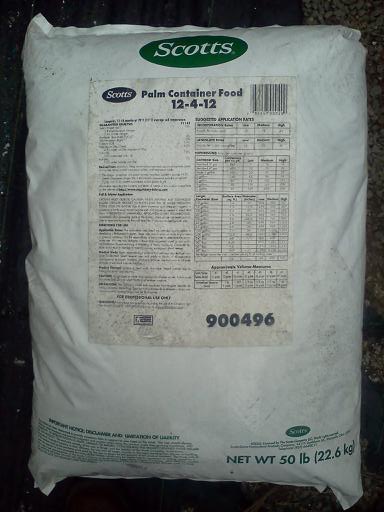

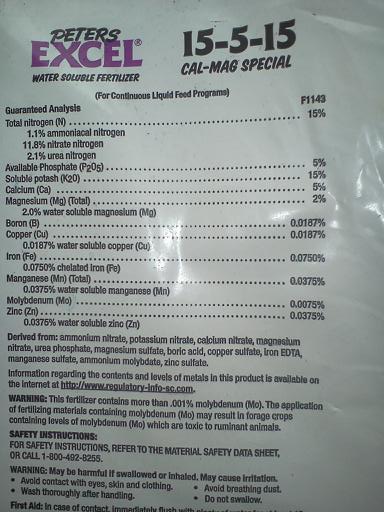
IMPORTANT FERTILIZER POINTS:
MORE DISCUSSION BELOW
If you read below you will find answers to a lot of your questions. I’ve tried to cover all important information and presented it in a way you can find mistakes in using fertilizer. Don’t skim over these things. All points are important.
THINGS TO DO:
- Always read the directions on the bag.
- Fertilize only when the garden or container soil is moist, especially when using a quick release material.
- Water the garden or container quite thoroughly after fertilizing.
- When growing palm trees, try to under-fertilize rather than over-fertilizer. Under-fertilized plants just don’t grow as fast; over-fertilized them and they may die.
- Pick a fertilizer with an approximate 3:1:3 NPK ratio. Previous opinion was to use a 3:1:2 ratio, but more recent opinions are to use the higher potassium fertilizers (the last number). Note that this is a ratio, not the formulae you are looking for. So, a 15:5:15 ratio would be ideal (note the ratio of 3:1:3). The company Scotts has just released what appears to be an ideal palm fertilizer with microelements, magnesium and calcium.
- Consider buying a slow release fertilizer. It is more expensive but probably better for the plants and less labor intensive.
- Buy a fertilizer with supplemental magnesium and calcium. As presented at the Palm Symposium in Miami in June, 1999, these two elements are very important.
- Buy a fertilizer with ample microelements. Lack of these causes all sorts of growth maladies. When planting palm trees, avoid application of separate microelements immediately as these too can cause burn.
- Do consider organic fertilizers if that is your preference. Use of items such as blood meal, bone meal, fish emulsion, worm castings and manure can be successful.
- Fertilize completely around the plant, distributing the granules over the entire root distribution area (approximately the mid-day shadow of the plant). Because of the tubular histology of the palms vascular structures, lateral transfer of nutrition in the palms trunk may be minimal.
- For interior plants, salt buildup (from your fertilizer or municipal water) is a big problem. Leach plants outdoors several times a year or use distilled water to lessen this problem.
- Consider working the fertilizer into the soil if possible.
- Add fertilizer to organic top-dressings (i.e. wood shavings) over the garden. These materials typically consume nitrogen during their breakdown. Many people rake the garden of debris, apply their fertilizer, and finish with a top dressing. many growers use top dressings of organic material as a regular part of their palm tree care.
- Find a fertilizer that works well for you and stick with it. Fertilizing is one of the most important aspects of palm tree care and growers should stick to a system that works for them.
- Salt test your soil in container plants if you see growth problems. Salts can build up easily in containers if you fertilize heavily and water infrequently (i.e. house plants).
- Do leach your containers with multiple heavy waterings if salt buildup is a problem. This is very important with containerized plants inside the home.
- Consider using combinations of different fertilizers such as a small amount of quick release, some organic fertilizer (blood meal) and a slow release. Fine tune such combinations for optimal results.
- Consider utilizing an injector and soluble fertilizer for a greenhouse operation. This gives the opportunity to give very dilute applications (less risk of burn) at more frequent intervals, thus optimizing growth.
- Consider fertilizing in the winter as well. This is controversial. The theory is that the plants can absorb elements needed to maintain strength during cold weather and be prepared for spring growth when the weather warms. Opponents would say it encourages winter growth of vulnerable new leaves.
- Do consider blood meal for chronically anemic plants that appear yellow or faded when sun-exposure is not considered to be the problem. This may be secondary to nitrogen or iron deficiency, and this can be remedied by blood meal.
- Do consider putting a conservative amount of a 6 month slow release fertilizer directly into your soil if you are making up your own soil blend. Also remember dolomite to raise the pH resulting from high acid-containing organic materials.
- Always mulch or top dress the soil where possible. It improves the quality of your soil and conserves water.
- Do talk to other people about what has worked well for them.
THINGS NOT TO DO:
Never fertilize on dry soil as it can lead to plant burn and death.
Don’t over-fertilize as this can lead to plant injury. Follow the manufacturers directions. If the directions lead to problems, use less.
Don’t throw granular fertilizer down the crown of the plant.
Don’t throw all the fertilizer in one pile at the base of the plant. Scatter it.
Don’t throw the fertilizer against the trunk of the plant in a big pile as this can lead to necrosis or scaring of the trunk.
Don’t use the cheapest, highest concentration quick release fertilizers such as ammonium nitrate 30:0:0 (lawn fertilizer), as this can lead to plant burn or injury.
Don’t put fertilizer directly in contact with the roots when repotting a container plant, especially if using a quick release fertilizer.
Don’t put steer manure into the hole when planting a palm. Too often the generated heat and solute concentration are damaging to the palms roots.
Don’t fertilize immediately when planting palm trees. Wait about 4 to 6 weeks after planting when you’re sure adequate soil water content is achieved and risk of transplant shock has passed.
Don’t assume that foliar spray fertilizers are adequate for all the plants needs. Very few growers totally rely on foliar spray and its usage and benefit are still undetermined.
Don’t be hesitant to soil test for salt content if problems arise, especially in container plants. Inexpensive pronged meters easily tell you when you have problems.
Don’t forget that your fertilizer needs may be different than someone in a different climate or with different rainfall. High rainfall areas with sandy soil often need more fertilizer and microelements as these items are quickly leached from the soil.
Don’t allow rain to fall on your stored bags of fertilizer as this may solidify the granules or leach out the fertilizer. Protect the bags with a tarp.
Don’t think that there’s only one right way to fertilize. Find what works under your conditions. Some people like slow release, some like quick release, others like fish emulsion and a few might say bat guano is the only way to go! Simply develop a safe fertilization program that works right for you.
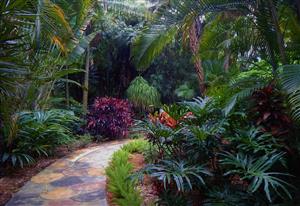
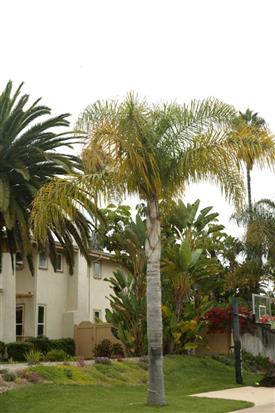
Summary
Palms like an N/P/K ratio of 3:1:3 (ratio, not number on bag) and the best fertilizers contain microelements. Slow release preparations are preferred. Talk to others, get a fertilizer that you like, use it conservatively (and following the directions) on moist soil, and monitor your results with a low threshold for change if things aren’t performing well. Chemical burns to plants are totally preventable and the haphazard use of fertilizers results in plant shock or demise. Fertilizer burn is most evident in the new spear or the newest leaves. Such damaged leaves turn brown and crispy appearing. Old leaves are often not damaged. Interior grown palms are very vulnerable to build up of salt in the soil with leaf burn or plant death.
Steer manure is risky because of salt burn and potential death to the plant. Finally, consider organics fertilizers such as mild manure and worm castings as many feel they are an ideal way to go. Chemical fertilizers can actually kill worms and beneficial soil organisms, so do look toward organic fertilizers where possible.
(End)
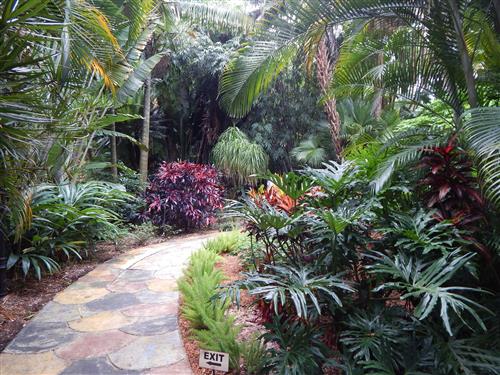
- PALM TREES, CYCADS & TROPICAL PLANT BLOG - October 1, 2020
- TRACHYCARPUS
The Windmill Palm - September 30, 2020 - FAN PALMS –
PALMS WITH CIRCULAR LEAVES - September 29, 2020












